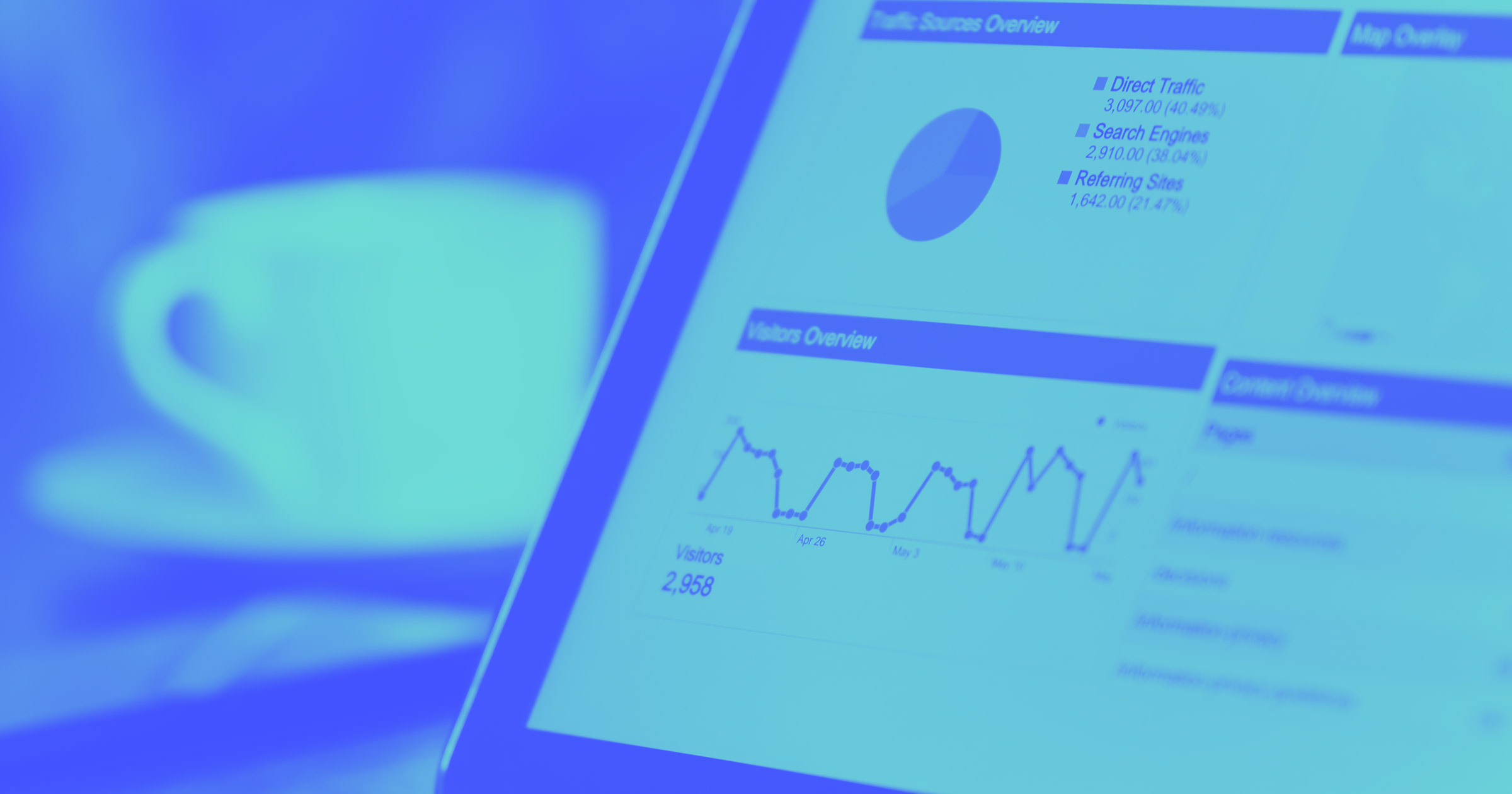Your website is one of your business’s most important marketing assets.
It’s often the first touchpoint for potential customers and an important source of information for returning visitors. In other words, your website is a prime opportunity to make a winning impression and frame users’ perception of your brand.
A key part of leaving a positive impact is a seamless and engaging user experience (UX). The more relevant, valuable, and navigable your site, the more likely users will stay and endorse it. Website optimization encompasses various content, design, and infrastructure strategies that help you build a user-friendly web platform that’s more likely to have customers coming back for more. Here’s how.
Why you need to optimize your website
Website optimization is an ongoing process that’s essential for maintaining your site’s relevance and effectiveness. To draw new visitors and maximize your return on investment (ROI), you must regularly refine your website to deliver an exceptional user experience. Optimizing your website also:
- Enhances the user experience. Optimization ensures that your website meets your visitors’ expectations and provides a seamless website user journey. A streamlined user experience makes visitors more likely to engage with your site and ultimately convert.
- Increases organic search visibility. As user engagement increases, search engine algorithms recognize your site as relevant and valuable, boost its ranking on the search engine results pages (SERPs), and make it more discoverable to potential customers. Higher rankings translate to more eyes on your site and broader reach for your brand.
- Drives more traffic. Better visibility leads to increased organic traffic, and a well-optimized website converts more of this traffic into sales, boosting your return on investment (ROI). Optimized sites guide visitors smoothly through the sales funnel’s stages, capitalizing on every opportunity for conversion.
- Leads to higher conversion rates. Conversion rate optimization (CRO) is the practice of optimizing the ratio of users who perform a desired action on a website, thus optimizing conversions whether it’s purchases, sign-ups for memberships, content downloads, or some other action. Implementing a CRO tool can increase the effectiveness of the above components and amplify the efforts you’re already putting into optimizing your website.
How is website optimization connected to website personalization?
Website optimization and website personalization are closely linked, but they have two different means of achieving a similar goal.
With website optimization, the focus is placed on optimizing the overall experience for website visitors. This process focuses on testing and experimenting to determine what keeps visitors on the page and what leads to a conversion. Website optimization also incorporates removing points of friction, getting visitors access to the information they need faster, and overall usability.
With website personalization, however, the strategy is to target specific types of visitors and to tailor web pages for this audience. This typically involves leveraging demographic, geographic, firmographic, and user behavior data to provide the most relevant experience possible for that website visitor.
The best-performing web pages will incorporate both website optimization and website personalization. Think of it this way: if your website is lacking on basic website performance principles, it’s hard to build a high-quality personalization experience on top of that shaky foundation.
5 website optimization strategies
Website optimization involves a multifaceted approach that integrates content, design, SEO, and user experience. Let’s examine key strategies that boost your website’s performance, captivate your audience, and strengthen your online presence.
1. Create quality content
Valuable content draws new visitors to your site through search engines and backlinks. Aim to produce content that ranks well on SERPs and provides educational or entertaining value so it encourages visitors to return and share your site with their networks.
Google effectively identifies and favors high-quality content, focusing on:
- Relevance: Whether the content aligns with the search intent behind the keyword
- Authority: Your domain authority or credibility, influenced by factors like backlinks, user engagement, and overall popularity
- Stickiness: Whether your content genuinely engages visitors, reflected in longer dwell times and lower bounce rates on your site
To create content optimized for search engines and user satisfaction, consider the following steps:
Research and target keywords that match your audience’s search intent
Start your content strategy by conducting in-depth keyword research and identifying the terms and phrases closely aligning with what your target audience is searching for, or their search intent. Writing content that accurately reflects these keywords ensures you meet your audience’s needs more precisely. For example, if they search for “beginner yoga routines,” they expect content that introduces yoga practices, not advanced techniques.
By targeting the right keywords, you attract visitors more likely to engage with your content, stay on your site longer, and lower your bounce rate — and these user behaviors in turn elevate your search rankings.
Develop engaging and valuable content
Content marketing involves creating content that resonates with your audience that is more than just answering their questions — it requires providing them with a comprehensive resource. To achieve this, consider engaging subject matter experts to deepen your content’s authority, include relevant links for extended reading, and employ visuals like charts and infographics to clearly illustrate your points.
Use consistent messaging.
It’s a best practice to use similar messaging across communications, including ads, social media, landing pages, website content and beyond. Keeping this messaging consistent throughout the customer journey will keep your target audience engaged.
2. Audit and refresh your current content
Refreshing existing content quality can attract new readers and boost search engine rankings. Start with a content audit using SEO tools to analyze web traffic, rankings, and content coverage. This data identifies content ripe for refinement. Then, follow these steps:
- Revise. Articles with high traffic but low engagement, such as low session durations and high bounce rates, signal that they’re not fulfilling visitor needs. Rectify this by reevaluating the search intent for your target keywords and reshaping the content accordingly. Enhancing your call to action (CTA) can also improve engagement.
- Refresh. Content that previously enjoyed high traffic but now experiences a lull requires an update. Replace outdated links, add updated statistics or insights, and enhance its visual appeal with new images or headers. This approach can reignite reader interest and breathe new life into your content.
- Delete. Remove old promotions, obsolete content, and underperforming articles that no longer attract readers. Implement 301 redirects for these pages to retain any backlink value and set up a custom 404 page to manage broken link navigation without negatively impacting the user experience. This cleanup streamlines your site and reinforces SEO by eliminating irrelevant pages that dilute your website’s offerings.
3. Improve on-page search engine optimization
SEO isn’t just about optimizing your website as a whole — individual pages also matter. Ensure search engines can read, understand, and categorize your webpages. Even the most informative and relevant article will struggle to reach its intended audience if search engines can’t interpret its content. To assist search engines in effectively crawling and indexing your pages, consider optimizing the following elements:
Keyword placement
Include your primary keyword in the page URL, title tag (preferably at the beginning), meta description tag, and backlink anchor text. Feature it prominently in your H1 headers and subheadings (H2s, H3s) and the first 100 words of your content. Distribute the keyword and related terms throughout the article to reinforce the topic. This strategic keyword placement enhances your page’s relevance in search results, increasing its rankings.
Page structure
Develop a straightforward, navigable page structure to minimize user friction and encourage visitors to explore more of your site. A well-organized layout that incorporates elements like a clickable table of contents and clearly defined sections helps visitors navigate your site more effectively, leading to increased engagement and longer visit durations.
Links
Leverage outbound and internal link-building strategies to provide users with comprehensive information and improve your content’s authority. Outbound links to authoritative sources enhance your page’s credibility and help search engines understand your content’s context, which aids indexing. Internal linking is equally important because it keeps users engaged by navigating them to other relevant site content. It also distributes page authority throughout your platform, encouraging external sites to link back to your content.
Images
Properly optimized images can increase user engagement, assist with search engine indexing, and appear in image search results, driving additional traffic to your site. To optimize your images, follow image resolution best practices, such as adopting the WebP format and using descriptive file names. Assign alt text to all images to boost their search engine visibility and improve accessibility for users with screen readers.
XML sitemap
An incredibly simple but effective optimization that will help your site get better traffic is to build and submit an XML sitemap to Google. Your XML sitemap tells Google what the structure of your website is to help web crawlers index your site. This makes your content much more visible — even if it is new or has few internal links. Fortunately, creating a sitemap and submitting it through your Google Search Console account is a straightforward process.
4. Make sure your site is mobile-friendly
Google has moved towards mobile-first indexing, making responsive design and effective mobile sites more critical than ever. More than half of web browsing is now on mobile, so you need mobile-friendly and responsive design to serve the majority of your potential audience. Responsive design is also accessible design, which you need to help people with accessibility needs interact with your website.
5. Keep the sales cycle in mind
Your customers may be at various stages within the sales cycle. Remaining cognizant of this will help you determine which content and website experience you should target for their specific situation. You can opt to personalize some of this content for increased relevancy, if your resources allow.



















How AI optimization drives conversions for marketers
In our ebook, learn how marketers are creating frictionless online experiences with AI.
How to optimize your website: 4 tips
Now that we’ve reviewed some website optimization strategies, let’s explore four best practices to keep your efforts on track and guarantee their effectiveness.
1. Set clear objectives
Clearly define your website optimization goals, like improving user engagement, increasing conversion rates, or enhancing search engine visibility. Specific objectives will guide your overall plan and help you create a roadmap that breaks down your web optimization project into milestones, tasks, and dependencies. This turns your goal into actionable steps and boosts your team’s follow-through.
2. Conduct thorough research
Before making changes to your website, conduct comprehensive quantitative and qualitative research. This includes looking into market trends, understanding your existing customers, evaluating your target user base, and accounting for technological innovations that may reshape the entire digital landscape, like artificial intelligence (AI). By understanding and tailoring your site to meet your target audience’s preferences, behavior, and pain points, you build a site that delivers an optimal user experience and sets you apart from your competitors.
3. Make technical improvements
Besides updating content and metadata, keep your site’s technical components updated to ensure a solid technical SEO foundation. This is particularly important in the context of Core Web Vitals, a set of metrics that Google uses to assess a page speed and user experience. Core Web Vitals focuses on loading performance, responsiveness, and visual stability, all of which contribute to a smoother and more engaging user experience.
Faster-loading pages reduce user friction and keep site visitors engaged. You can boost site performance and page load times by refactoring your code and leveraging browser caching. If you’re operating on an outdated legacy web system or platform, consider updating or migrating to a modern platform that meets current security standards, which is crucial for maintaining user confidence.
4. Measure the impact of your site optimization strategies
Part of website optimization is understanding its impact on your bottom line so you can make informed decisions about where to focus your efforts and ensure continuous improvement. Determine what you can measure and how to measure it. Whether you’re aiming to analyze page performance, engagement, content downloads, or webinar registrations, you’ll need to identify how you’re going to measure and analyze each of these metrics and how you’ll keep track of them over time.
Consider implementing A/B testing to test variations of your webpages and identify which changes yield the best results. You can leverage an automated website optimization tool to streamline this process and use robust analytics tools to track key performance indicators (KPIs). These tools can provide valuable insights into user behavior and conversion rates, enabling you to make data-driven decisions and refine your strategy over time.
Optimize your site with Webflow
Website optimization involves many factors, and is a crucial piece to any organization’s overall revenue strategy. When you’re ready to optimize your website, Webflow can help.
With Webflow’s visual-first website experience platform, you have everything you need to create, launch, and optimize content that captivates your audience. Our design tools let you craft a custom experience without touching code, while Webflow Optimize provides powerful tools to create highly personalized web experiences for your visitors.
Ready to see how Webflow can transform your website? Explore Webflow Optimize to discover how AI-driven insights and optimization tools can help you boost engage and drive more revenue, or get in touch with our team today.

Discover what performs best and deliver it at scale
Maximize conversions with rapid insights, tailored visitor experiences, and AI-powered delivery.
































